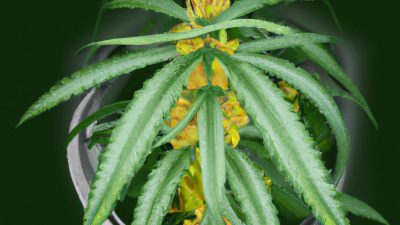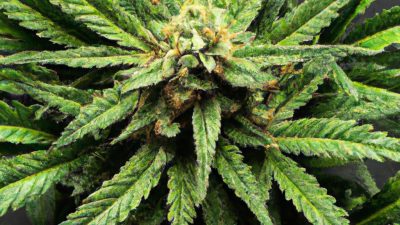
Automating Your R134a Extraction Workflow Safely: A Guide for Cannabis Processors
The cannabis industry has rapidly advanced with the integration of innovative technologies aimed at improving extraction efficiency and product quality. Among the many extraction methods available,R134a extraction has emerged as a solvent-based technique valued for its selectivity and environmental benefits. As demand for cannabis concentrates grows,automating your R134a extraction workflow safely can substantially streamline post-processing and elevate product consistency.
Understanding R134a Extraction in Cannabis Processing
R134a (1,1,1,2-Tetrafluoroethane) is a hydrofluorocarbon solvent commonly used in low-pressure extraction systems for cannabis. It offers a cleaner alternative to customary solvents like butane or propane and is classified as non-flammable, making it popular among processors focused on safety and solvent purity.
Using R134a allows the extraction of high-quality cannabinoids and terpenes while minimizing co-extraction of unwanted compounds. However, given its chemical properties, handling R134a requires robust safety protocols and specialized equipment capable of operating under refrigeration temperatures and moderate pressures.
Why Automate the R134a Extraction workflow?
Automation in cannabis extraction has become a game-changer for producers aiming to maximize throughput and maintain consistent product profiles. Here are some key advantages of automating your R134a extraction process:
- Increased Efficiency: Automated systems reduce manual labor and downtime, boosting overall processing capacity.
- Precision Control: Digital controls ensure consistent solvent flow rates, temperatures, and pressures for reproducible extractions.
- Safety Enhancements: Automated monitoring minimizes human exposure to refrigerant solvents and helps prevent leaks or unsafe pressure conditions.
- Data Integration: Modern automated systems collect critical data to optimize workflows and comply with regulatory reporting requirements.
Safety Considerations When Automating Your Workflow
While automation brings numerous benefits, R134a extraction systems require meticulous safety measures to protect operators and facilities. Here are essential safety practices to follow:
- Use Certified Equipment: Employ extraction machinery specifically designed and certified for R134a use-look for ASME-rated pressure vessels and refrigeration-certified components.
- Implement Leak Detection: Utilize sensors and alarms to detect refrigerant leaks promptly and automatically shut down systems when necessary.
- Ensure Proper Ventilation: Maintain well-ventilated processing rooms with exhaust systems to prevent refrigerant accumulation in case of leaks.
- regular Maintenance: Schedule frequent inspections and maintenance of refrigeration and pressure components to preserve system integrity.
- Operator Training: Train all staff on emergency shutdown procedures and safe handling of R134a solvent and equipment.
Key Steps to Automating R134a Extraction Workflow Safely
- Select a Fully Integrated Automated Extraction System: Look for turnkey machines that combine solvent handling, extraction, solvent recovery, and filtration in one unit with programmable controls.
- Install Advanced Control Software: Utilize systems with programmable logic controllers (PLC) or customized software that automate start/stop sequences, regulate solvent temperatures and pressures, and provide real-time monitoring dashboards.
- Integrate Safety Interlocks & Emergency Stops: Ensure hardware and software interlocks prevent unsafe operations like over-pressurization or refrigeration system failures.
- Automate Data Logging: Collect extraction parameters such as solvent volume used, batch yield, and environmental conditions for quality control and traceability.
- Develop a Extensive SOP: Document all automation procedures, safety checks, and emergency protocols incorporating the new automated workflow.
Practical Tips to Maximize Automation Benefits
- Start Small: Begin automating a single stage of extraction to validate safety and efficiency improvements before scaling up.
- Regularly Review System Data: Analyze logged data trends to identify process bottlenecks or deviations that require process tweaking.
- Partner with Experienced Vendors: Work with manufacturers specializing in cannabis extraction automation to ensure best practices are built into your system.
- Maintain Redundancies: Incorporate fail-safes and manual overrides to enable rapid response during software or hardware malfunctions.
Comparing Manual vs. Automated R134a Extraction Workflows
| Aspect | Manual Extraction | Automated Extraction |
|---|---|---|
| Labor Intensity | High – Requires continuous operator involvement | Low – System handles repetitive tasks |
| Safety Risk | Moderate – Increased human exposure | Low – Continuous automated monitoring |
| Consistency | Variable – operator-dependent | High – Precise controls ensure repeatability |
| Data Availability | Minimal – Manual logging prone to errors | Extensive – Automated logs enhance traceability |
| Initial Investment | low | High |
Case Study: A Mid-Sized Cannabis Processor Automates R134a Extraction
GreenLeaf Extracts,a mid-sized cannabis concentrate producer,transitioned from manual to automated R134a extraction workflows in early 2023. They reported the following outcomes within six months:
- 30% increase in batch throughput due to reduced operator intervention and continuous workflows.
- Decrease in solvent loss by 15% due to precise solvent metering and leak detection automation.
- Zero safety incidents following the integration of automated emergency shutdowns and ventilation controls.
- Enhanced product consistency leading to stronger brand reputation and increased retail demand.
Conclusion: Embracing Safe Automation for Superior Cannabis Extraction
Automating your R134a extraction workflow aligns perfectly with the evolving landscape of cannabis technology and post-processing innovation. While R134a extraction offers distinct advantages in solvent safety and product quality, integrating automation brings efficiency, enhanced safety, and scalability to cannabis processors.
By investing in certified equipment, prioritizing safety protocols, and leveraging intelligent control systems, cannabis businesses can achieve reliable, consistent extracts that meet growing market demands. Whether you are just starting or looking to upgrade your extraction line, embracing automated R134a workflows is a future-proof strategy for cannabis success.
Keep these best practices in mind, and your cannabis extraction operation will benefit from both cutting-edge technology and uncompromising safety.





